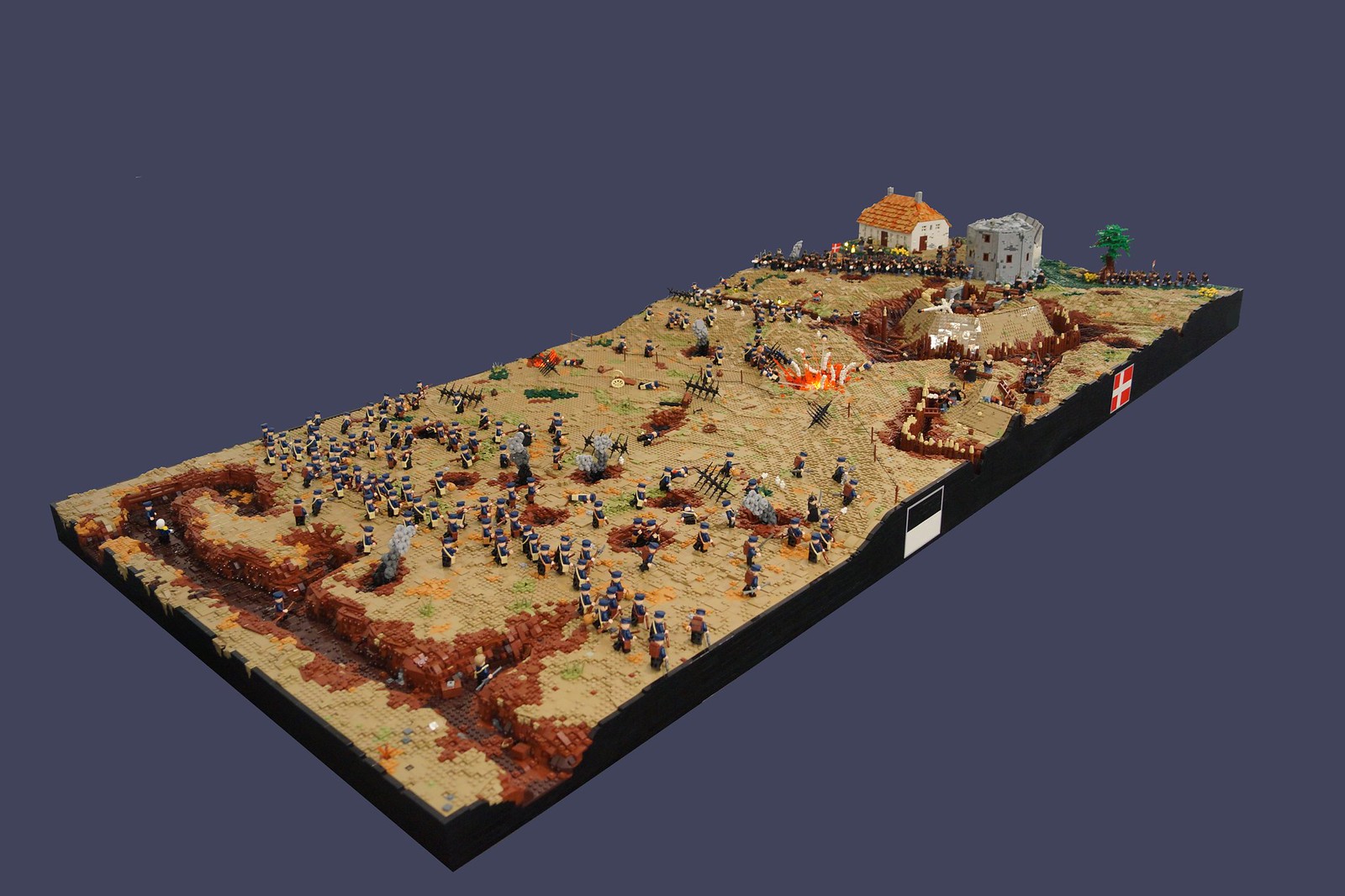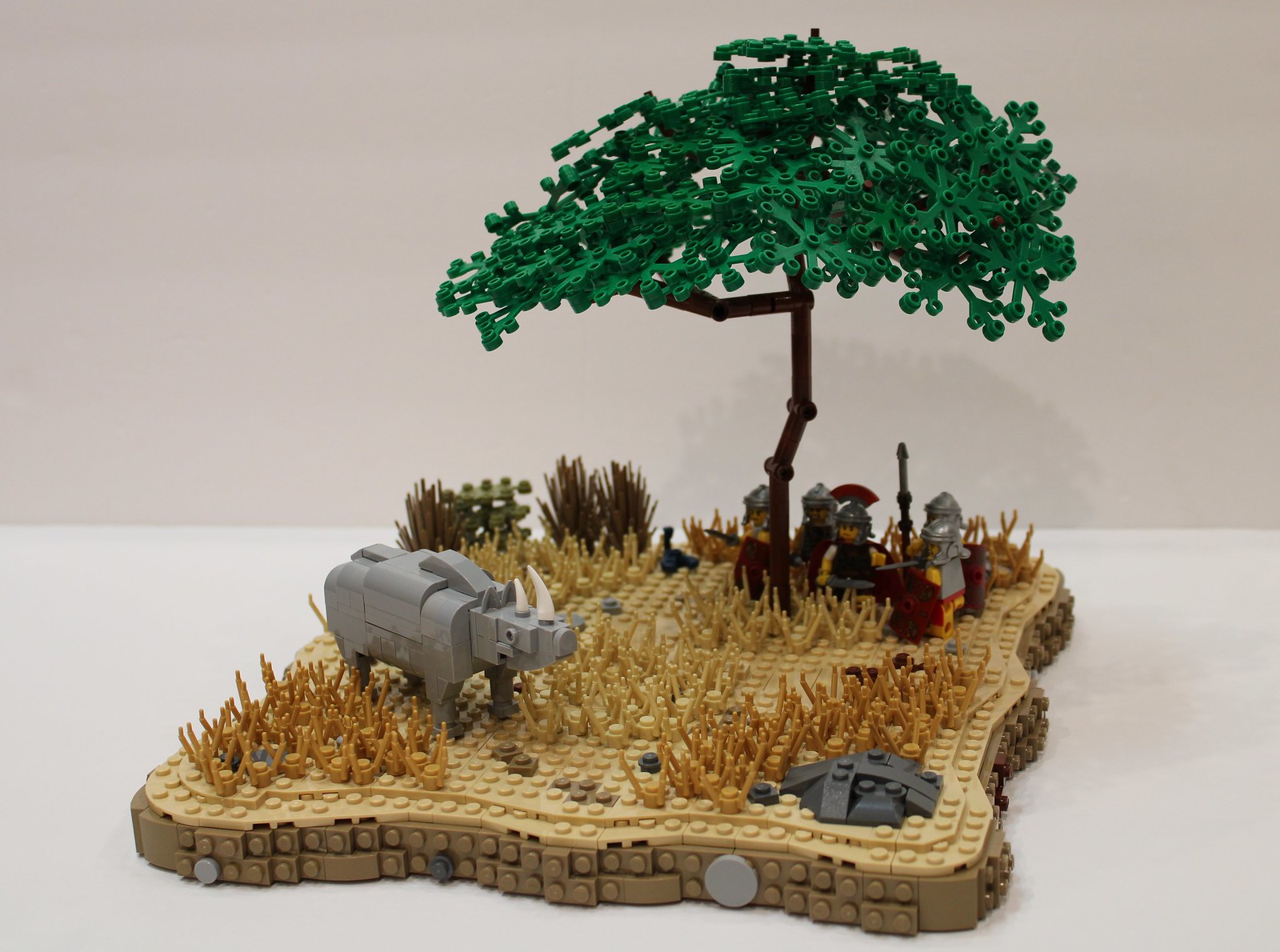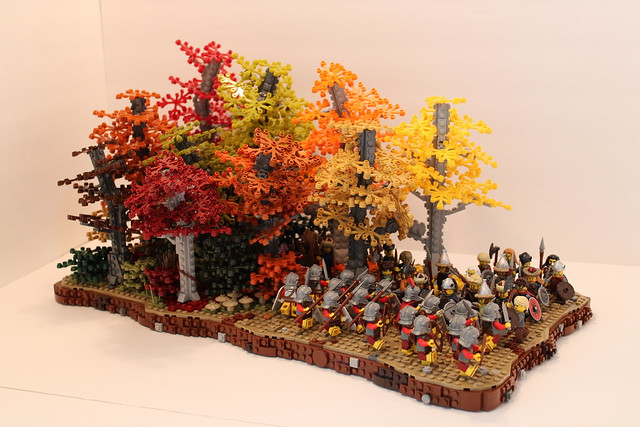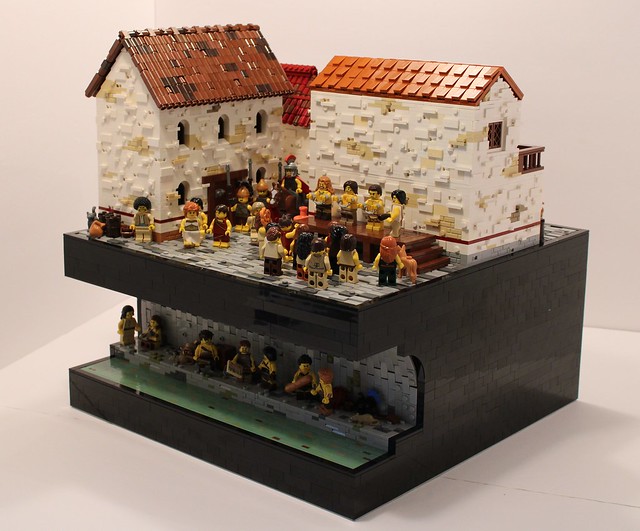Travel back in time with this LEGO battle scene from the Hundred Years’ War by builder Hunter Erickson. This build depicts the Battle of Poitiers, fought between the French and the English in the year 1356. This was but one of many clashes in this series of armed conflicts fought over the French throne. Edward, the Black Prince, led the English forces in this battle, while King Jean II led the French forces. This LEGO scene depicts the battle much the same an artist would have painted the event at the time of the conflict. Layering the background, the sky behind some brick-built hills achieves a great forced perspective. I just love the colors of the plates and bricks making up the rising dawn! The scene is densely packed with minifigures engaged in deadly combat. In blue are the French, fighting to push back the ever-advancing troops of the English. And waving across the battle from the mounted soldier is St. George’s flag, wonderfully rendered with round plates, studs, and clips to capture cloth in motion.
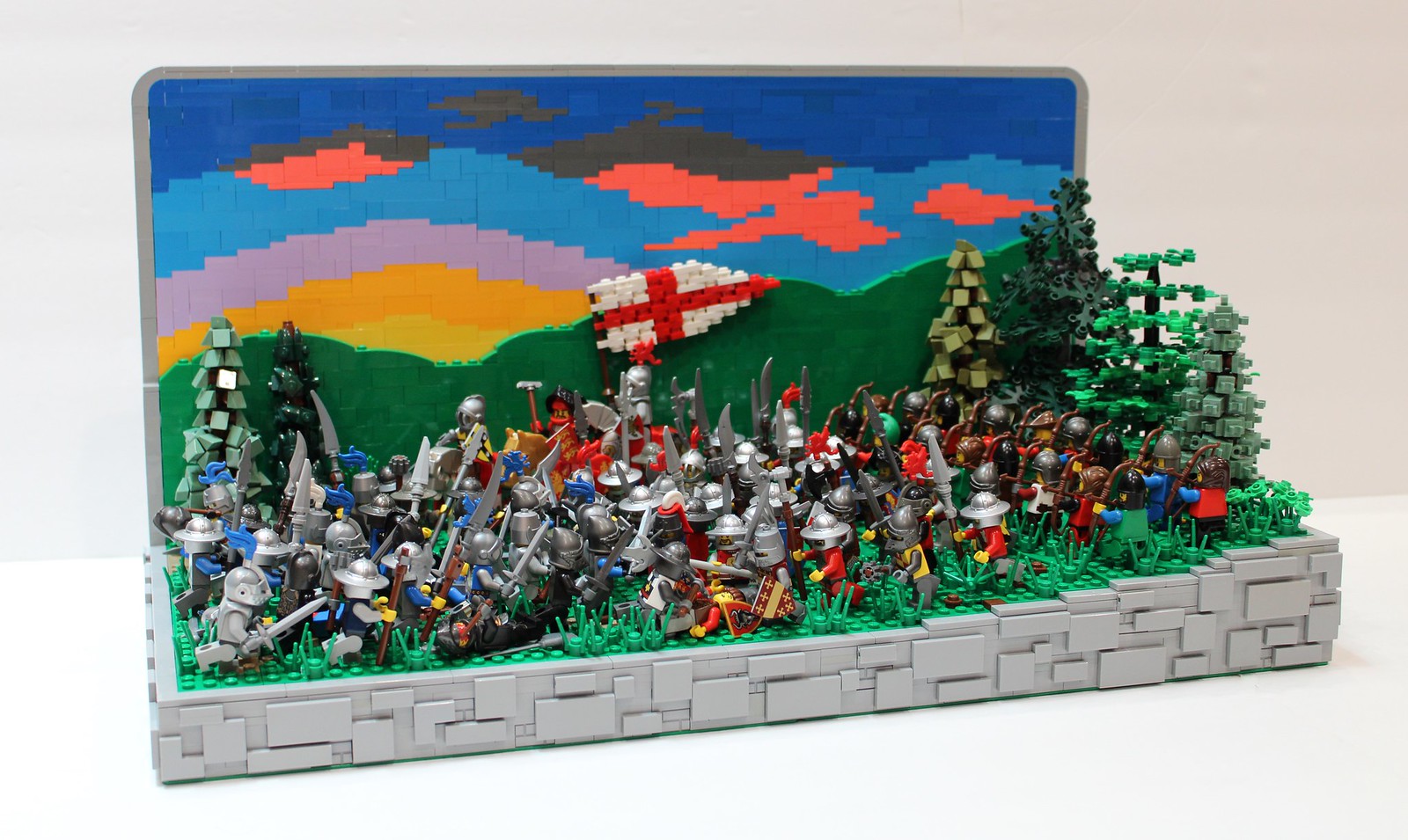
The outcome of this battle will side with the English, despite the two-to-one odds against them. King Jean II was captured, along with one of his sons. Their ransom and the peace talks would take another four years to complete, but eventually, hostilities ceased in 1360 with the Treaty of Bretigny. England regained Aquitaine, was paid the ransom for Jean II and his son, and renounced the claim on the French throne. However, this peace was fleeting–hostilities resumed ten years later, continuing the Hundred Years’ War.
The Brothers Brick is funded by our readers and the community. Articles may include affiliate links, and when you purchase products from those links, TBB may earn a commission that helps support the site.

